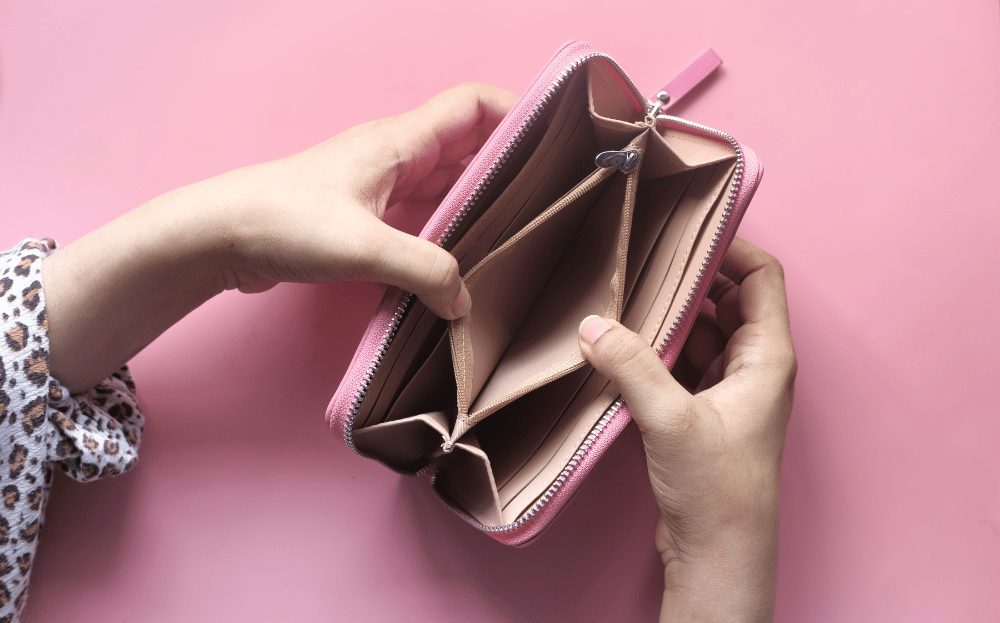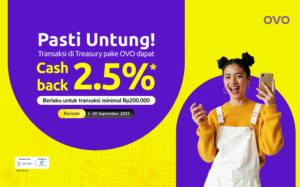Managing your personal finances is an important key to a stable financial life. However, many people feel that they have saved money and managed their finances well, but still the savings balance does not increase. The answer may not be a lack of income, but invisible spending.
Invisible spending can be a silent enemy in financial management. This spending often goes unnoticed and unnoticed because of its seemingly trivial nature. If not controlled, invisible spending can delay your dream of achieving financial freedom.
What is Invisible Spending?
Invisible spending is a type of small and routine spending that is often not felt, but when collected, the value can be very large. Because they are not consciously recorded, these expenses often go unnoticed. Even though you have saved money, you can still get caught up in invisible spending because of its inconspicuous nature.
You may think that this kind of spending is okay because the value is small. But if incurred continuously, the amount can interfere with the main budget. This is why recognizing and controlling invisible spending is an important first step in achieving a healthy financial condition.
So, what is invisible spending and how can it be controlled? Check out the discussion that Treasury has summarized below.
Examples of Invisible Spending that You Don’t Realize You’re Spending
1. Unused Subscriptions Can Be Invisible Spending
Subscriptions to streaming services, premium apps, or gyms often fall into the invisible spending category. At the beginning it feels cheap, for example Rp200,000 per month, but if collected for a year, the value can reach millions of rupiah. Especially if you don’t really use it regularly.
The habit of subscribing for fear of missing out on this trend is a trap that many do not realize. Many people still pay for services that they haven’t even opened for months. This becomes invisible spending because payments are made automatically through credit cards or digital wallets.
2. Postage and Admin Fees
In this digital era, postage and app admin fees are very common invisible spending. The cost of a single transaction may feel light at only Rp5,000 to Rp15,000 but if done almost every day, you could be losing hundreds of thousands unknowingly every month.
The problem is, these small costs are rarely taken seriously. Especially when shopping online, you tend to focus on the price of the item without calculating additional shipping and service fees. The total waste of this type of invisible spending can be very large in the long run.
Whereas if this invisible spending is diverted to investment, in the future you can get greater benefits. For example, by investing in gold in the Treasury app. No need to bother going to the gold shop, now you can buy and sell gold anywhere and anytime with a nominal starting from Rp5,000 only.
Also Read: Frugal Living: The Definition and Purpose of Frugal Living Without Torturing Yourself – Treasury
3. Invisible Spending is Often Food and Drink
Having coffee at a cafe, buying snacks when filling up your gas tank, or having an afternoon snack when you’re bored at work, are clear examples of invisible spending. Expenditures like this are rarely noted because the nominal is small. Without realizing it, these expenses can drain your wallet if done consistently.
Unlike the cost of daily meals which is a necessity for survival, buying food or drinks just because of impulsiveness or even following trends can fall into the invisible spending category.
4. Parking and Additional Transportation Costs
Daily parking fees, online motorcycle taxis ordered because you are lazy to walk, or additional gasoline for going back and forth to a place that is not too important can be invisible spending that happens very often. Small amounts paid in cash or through e-wallets make many people unaware of how much these costs can add up to in a month.
Getting into the habit of walking short distances, using public transportation when possible, or structuring your agenda to be route-efficient can reduce invisible spending in this sector. Small savings every day will have a big impact in the long run.
5. Beware of Fake Discounts and Tricky Promos Can Be Invisible Spending
You must be familiar with buy 1 get 1 promos, flash sale discounts, or bundling packages that often make you feel like you are saving money. In fact, this offer is actually another form of invisible spending, especially if the items purchased are actually not really needed.
Attractive offers make many people buy more than they should. This is a form of waste wrapped in frugal packaging. This type of invisible spending is very dangerous because it is accompanied by a feeling of satisfaction, even though the money you spend is outside of financial planning.
Don’t let invisible spending steal your chance to live more prosperously in the future. Let’s start to be more aware of daily expenses and make sure every rupiah you use is as needed and aims for something more meaningful.
How to Avoid Invisible Spending
- Record Every Little Expenditure
Use a daily money management app or manual notes so you know where your money is going, including coffee, snacks, or parking fees.
- Review Subscriptions Periodically
Review all subscription services every 1 to 3 months. Discontinue unused services to avoid becoming a silent financial burden.
- Create a Dedicated Lifestyle Budget
Set a monthly limit for snacks, impulse purchases, or entertainment. This way, you can still enjoy life without going off the healthy financial track.
- Use a Planned Shopping Method
Shop according to your list of needs and avoid being tempted by irrelevant promos. Don’t let discounts lead you to waste in disguise.
- Get in the habit of postponing purchases
Apply the 24-hour rule before buying unnecessary items. This method helps you resist impulsive desires and prevent invisible spending that goes unnoticed.
Managing finances is not just about earning extra income, but also about controlling invisible spending. Invisible spending may seem trivial, but if left unchecked, it can be the biggest obstacle for you to save, invest, and achieve long-term prosperity.
You can improve your spending pattern slowly but surely by recognizing the types of invisible spending and start recording small expenses. Small discipline today can bring big changes in the future. Don’t let invisible spending steal your chance to live a more prosperous life.











